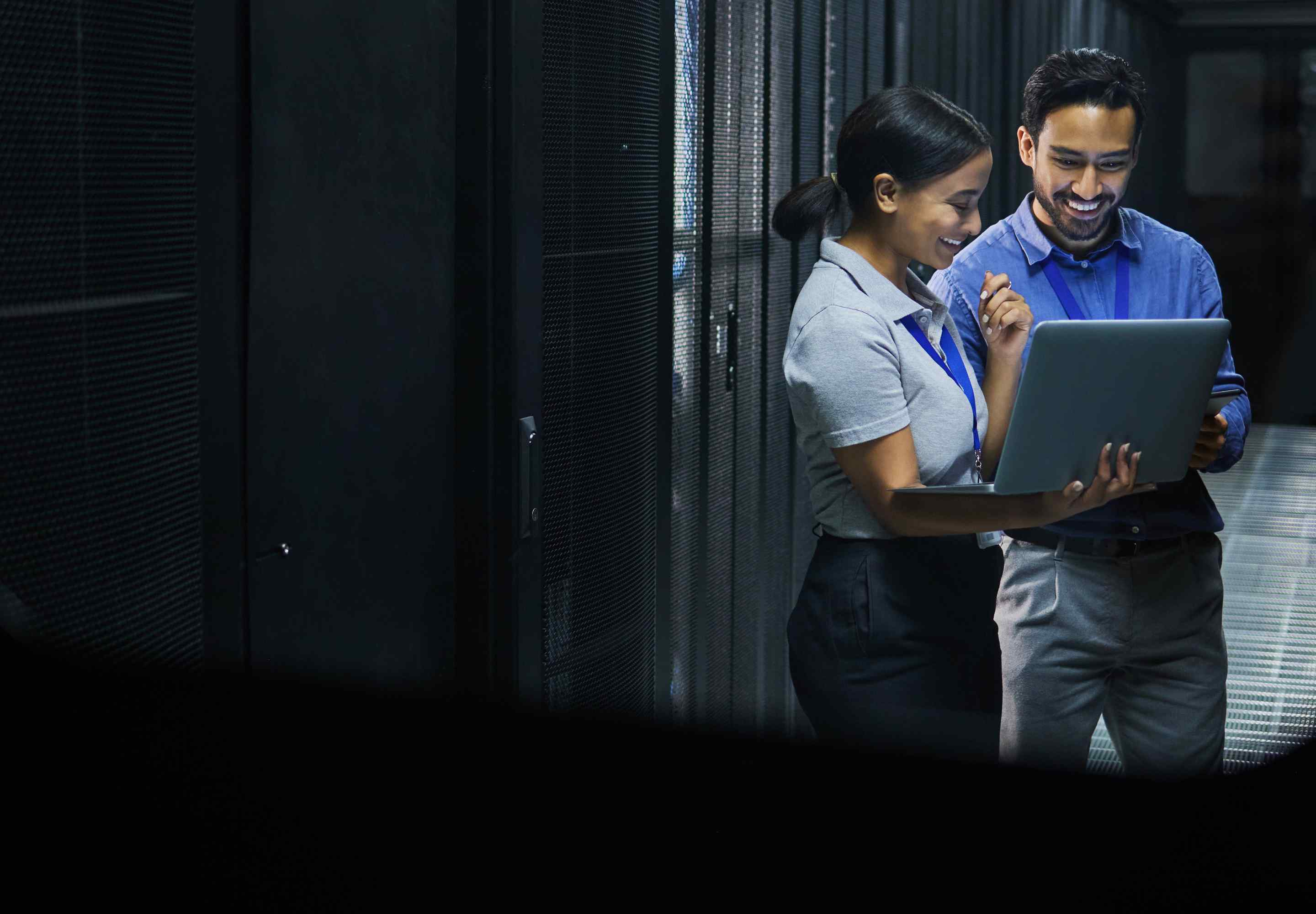-
Featured services
2026 Global AI Report: A Playbook for AI Leaders
Why AI strategy is your business strategy: The acceleration toward an AI-native state. Explore executive insights from AI leaders.
Access the playbook -
Services
View all services and productsLeverage our capabilities to accelerate your business transformation.
-
Services
Network Services
-
Services
Cloud
-
Services
Consulting
-
-
Services
Data and Artificial Intelligence
- AI and Intelligent Solutions
- Data/AI Strategy and Program
- Data Engineering and Platforms
- Data Governance and Management
- Data Visualization and Business Decision
- GenAI Consulting
- GenAI Platforms
- GenAI Industry Services
- GenAI Infrastructure Services
- GenAI Value Transformation
- View Data and Artificial Intelligence
-
Services
Infrastructure Solutions
-
Services
Global Data Centers
-
Services
CX and Digital Products
-
Services
Application Services
-
Services
Sustainability Services
-
Services
Digital Workplace
-
Services
Business Process Services
-
Services
Generative AI
-
Services
Cybersecurity
-
Services
Enterprise Application Platforms
![]()
Accelerate outcomes with agentic AI
Optimize workflows and get results with NTT DATA's Smart AI AgentTM Ecosystem
Create your roadmap -
-
-
Insights
Recent Insights
-
The Future of Networking in 2025 and Beyond
-
Using the cloud to cut costs needs the right approach
When organizations focus on transformation, a move to the cloud can deliver cost savings – but they often need expert advice to help them along their journey
-
Make zero trust security work for your organization
Make zero trust security work for your organization across hybrid work environments.
-
-
![]()
2026 Global AI Report: A Playbook for AI Leaders
Why AI strategy is your business strategy: The acceleration toward an AI-native state. Explore executive insights from AI leaders.
Access the playbook -
-
2026 Global AI Report: A Playbook for AI Leaders
Why AI strategy is your business strategy: The acceleration toward an AI-native state. Explore executive insights from AI leaders.
Access the playbook -
Discover how we accelerate your business transformation
-
About us
CLIENT STORIES
-
Liantis
Over time, Liantis – an established HR company in Belgium – had built up data islands and isolated solutions as part of their legacy system.
-
Randstad
We ensured that Randstad’s migration to Genesys Cloud CX had no impact on availability, ensuring an exceptional user experience for clients and talent.
-
-
CLIENT STORIES
-
Liantis
Over time, Liantis – an established HR company in Belgium – had built up data islands and isolated solutions as part of their legacy system.
-
Randstad
We ensured that Randstad’s migration to Genesys Cloud CX had no impact on availability, ensuring an exceptional user experience for clients and talent.
-
![]()
2026 Global AI Report: A Playbook for AI Leaders
Why AI strategy is your business strategy: The acceleration toward an AI-native state. Explore executive insights from AI leaders.
Access the playbook -
- Careers
Topics in this article
Disrupt or defend?
As with any powerful technology, the impact of AI is determined by those who use it. Adversaries are exploiting AI to orchestrate sophisticated tactics, including phishing, network infiltration and ransomware attacks.
But, when used differently, AI can offer powerful defences against those attacks. AI-powered cybersecurity solutions embedded in advanced security operations centers (SOCs) will bolster your organization’s responses to a range of threats, from malware to compromised identities and remote provisioning.
Meet your new SOC team member
Until now, security operations have typically relied heavily on human interactions. SOCs have housed teams of security analysts who monitor and respond to cyberthreats. However, this approach is no longer efficient or effective, as the complexity of new cyberthreats far exceeds the capabilities of human analysts.
AI is fundamentally transforming SOCs and ushering in a new era of cyber-defence. There’s a shift from traditional, reactive security measures to more proactive, predictive and automated approaches.
By leveraging AI, SOC teams can manage and mitigate threats more effectively, drastically reducing the time needed to resolve critical incidents from days or weeks to minutes or even seconds.
How AI defences make a difference
Imagine a large volume of outbound traffic is suddenly detected from a single endpoint on your network. A security analyst investigates this anomaly by checking logs, correlating events and possibly contacting the user to understand the context. This process can be time-consuming and prone to human error.
Now, consider the same scenario with AI. The system can automatically detect the unusual spike in your outbound traffic and cross-reference it with known threat-intelligence databases. It can then analyze traffic patterns to determine if the behaviour matches any known exfiltration techniques used by cyberattackers.
If the AI system identifies the traffic as potentially malicious, it can automatically trigger a series of actions:
- Isolate the endpoint: AI can quarantine the affected endpoint on your network to prevent further data losses.
- Alert the SOC team: It can send detailed alerts to your SOC team, including the nature of the anomaly, the affected endpoint and the results of its initial analysis.
- Initiate a forensic investigation: To support a more thorough investigation, AI can start collecting forensic data such as network logs, endpoint activity and user behaviour.
By automating these steps, AI can significantly reduce the time taken to respond to potential data breaches and containing the associated impact on critical systems and/or data. This allows human analysts to focus on verifying the AI-based findings and conducting more in-depth investigations, rather than spending time on initial detection and containment.
Being secure can also cost you less
Apart from keeping your applications and data safe, integrating AI into SOCs can also lead to cost savings. Here’s a closer look at how it can achieve this objective:
- Continuous learning and adaptation: Traditional security methods often require meticulously designed standard operating procedures (SOPs) for every new cybersecurity scenario. In contrast, AI systems learn from the behaviours they observe during incidents. This reduces the effort and resources involved in creating and updating SOPs, and eliminates the need to create specific SOPs for every unique event.
- Operational efficiency: AI’s ability to handle routine tasks leaves human analysts free to focus on more complex, strategic and value-adding activities. AI systems can also scale more easily than human teams. As security threats escalate, AI can manage the increased load without a corresponding increase in staff. This allows you to operate a lean, but effective, SOC team.
- Less downtime and faster resolution: By automating routine tasks, rapidly responding to incidents and continually learning from and adapting to scenarios, AI minimizes downtime and speeds up threat resolution. This minimizes the potential financial impact of prolonged security incidents and maintains business continuity.
Find the right balance
As your organization grows, so will your cybersecurity needs – and finding the right balance between AI, automation and human expertise is crucial.
NTT DATA’s cybersecurity consulting, technology solutions and managed security services integrate AI, detailed threat analysis, the automation of routine tasks, and human insights to contextualize and refine your defences. This holistic approach addresses both current and future security needs.
Thanks to AI’s ability to autonomously learn, adapt and improvise, the era of security analysts spending long hours on manual investigations is over.




